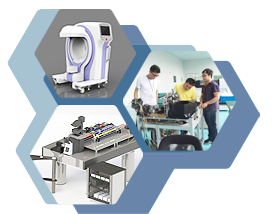Pupillary light reflex is one of the important neuro-ophthalmologic examinations, which reflects the integrity of the entire afferent and efferent optical system. Damage anywhere along the pathway will reduce the amplitude of pupillary movement in response to a light stimulus, which represents as an afferent pupillary defect. The relative afferent pupillary defect (RAPD), in terms of the asymmetric light response between two eyes, is an important, reliable and sensitive neuro-ophthalmologic test, providing reliable objection test indices for the diagnosis and prognosis of many eye diseases. In USA, the RAPD test is included in the standard test program for the optic nerve diseases such as glaucoma, as required in more than 80% of neuro ophthalmology clinics.
The traditional approach to test RAPD is performed based on empirical judgements by the doctors through a torch swinging test. However, such a test is very difficult to handle, and easily to give rough qualitative misdiagnosis results.
In this project, development of a digitized RAPD tester is carried out in response to the clinical requirements of an objective and quantitative test for the pupillary status. The proposed tester is developed against the current testing methods and equipment defects on optical and central nervous diseases. As a novel, easy-handle, objective, quantified, precise, rapid digitized neurological examination equipment, it can be used as a substitute of the current existing qualitative test methods for pupillary and oculomotor functions, to help doctors more easily and accurately judge patients’ illness, and therefore has important significance on the early diagnosis, clinical monitoring and prognosis evaluation of the optic nerve pathway relevant diseases such as optic neuritis.
As a result of the market shortage and leading technology advantages, this project is expected to generate a higher economic profit with low market and technology risks.

